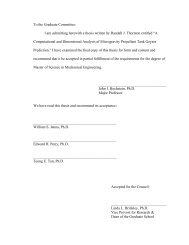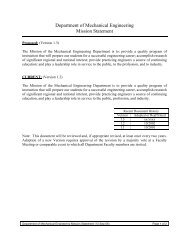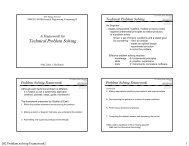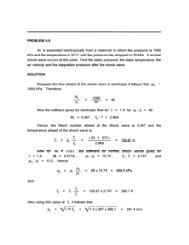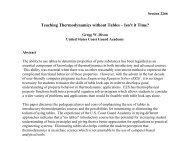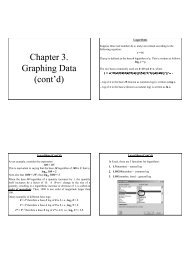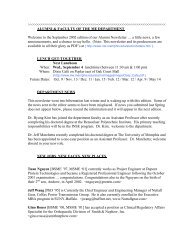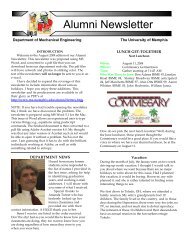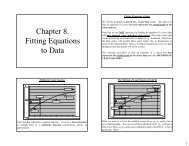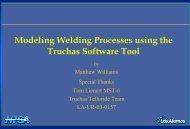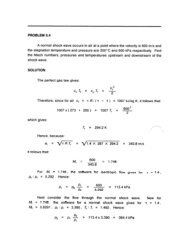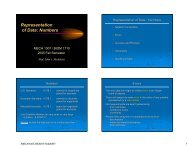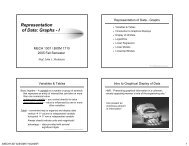MECHANICS of FLUIDS LABORATORY - Mechanical Engineering
MECHANICS of FLUIDS LABORATORY - Mechanical Engineering
MECHANICS of FLUIDS LABORATORY - Mechanical Engineering
Create successful ePaper yourself
Turn your PDF publications into a flip-book with our unique Google optimized e-Paper software.
Specific Speed<br />
A dimensionless group known as specific<br />
speed can also be derived. Specific speed is found<br />
by combining head coefficient and flow<br />
coefficient in order to eliminate characteristic<br />
length D:<br />
ω ss<br />
= ⎝<br />
⎛<br />
or ω ss<br />
=<br />
Q<br />
⎞<br />
⎠<br />
ωD 3 1/2<br />
ωQ 1/2<br />
(g∆H) 3/4<br />
ω<br />
⎛<br />
2 D 2<br />
⎞<br />
⎝ g∆H ⎠<br />
3/4<br />
[dimensionless]<br />
Exponents other than 1/2 and 3/4 could be used (to<br />
eliminate D), but 1/2 and 3/4 are customarily<br />
selected for modeling pumps. Another definition<br />
for specific speed is given by<br />
ω s<br />
= ωQ1/2<br />
∆H 3/4 ⎣ ⎡ rpm = rpm(gpm)1/2<br />
⎦ ⎤<br />
ft 3/4<br />
in which the rotational speed ω is expressed in<br />
rpm, volume flow rate Q is in gpm, total head ∆H<br />
is in ft <strong>of</strong> liquid, and specific speed ω s<br />
is<br />
arbitrarily assigned the unit <strong>of</strong> rpm. The equation<br />
for specific speed ω ss<br />
is dimensionless whereas<br />
ω s<br />
is not.<br />
The specific speed <strong>of</strong> a pump can be<br />
calculated at any operating point, but<br />
customarily specific speed for a pump is<br />
determined only at its maximum efficiency. For<br />
the pump <strong>of</strong> this experiment, calculate its<br />
specific speed using both equations.<br />
49



